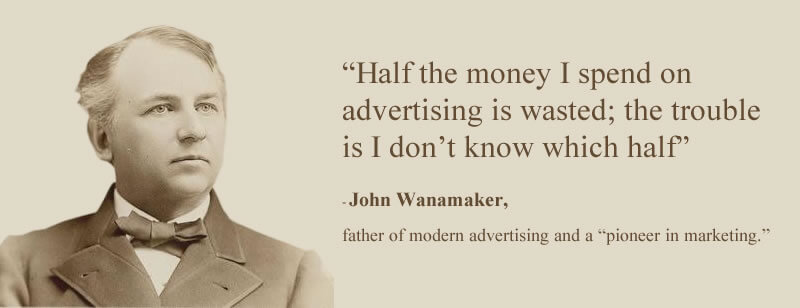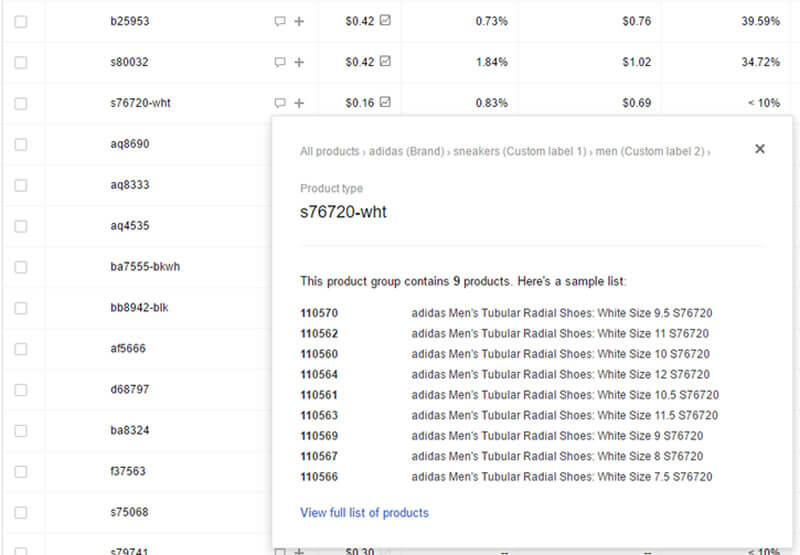Opinions expressed in this article are those of the sponsor. Search Engine Land neither confirms nor disputes any of the conclusions presented below.
It’s 2018. Are your Google Shopping campaigns ready?
What a year 2017 was for Google Shopping, right? The real question is, though: How did your campaigns fare? Stellar? Decent? Mediocre? Regardless, the simple fact remains that it is now 2018 — a new year, which means renewed opportunities to do better (even if you think 2017 was your best). Undoubtedly, however, you are […]
What a year 2017 was for Google Shopping, right?
The real question is, though: How did your campaigns fare? Stellar? Decent? Mediocre? Regardless, the simple fact remains that it is now 2018 — a new year, which means renewed opportunities to do better (even if you think 2017 was your best).
Undoubtedly, however, you are already hard at work and busy with planning, logistics, meetings, budgeting, maybe even replatforming to a new e-commerce solution, and all of that is an exhausting effort.
So, in the interest of saving time (and time does equal money), here are a few things you SHOULD be looking for in your Shopping campaigns to help ensure that this year and every next year is your next “best” year.
Campaign structure really is everything
John Wanamaker, American merchant, religious, civic and political figure, often considered a pioneer in marketing, said it best:
His words live on as a lesson for today’s online retailers and search engine marketers.
Wasted advertising dollars are equivalent to the plague for Google Shopping campaigns. Finding that waste and isolating it is reliant, and almost completely so, on the structure or structural integrity of your campaigns.
Are your campaigns structured for optimal efficiency? Not sure? Here are two of the most common structuring missteps to look for.
Over-structuring
There are many, many ways to structure a Shopping campaign, all of which fall under the header of “subdivision,” or the process by which one groups like or related products together by defined product groups. In nearly 90 percent of all campaigns we take over management of, though, we see a misunderstanding or even misuse of subdivision tactics.
Over-structuring can exist in many forms. However, in most cases, it begins with a basic product group breakdown followed by the overuse of many more sub-breakdowns. What you wind up with essentially is a nightmare for bid and campaign management.
Take, for example, a retailer who first chose to do a basic campaign subdivision by type of product. Then for each subsequent breakdown, they implemented Custom Labels.
They stopped there. Now, within the subgroup there existed multiple products, all of which were being bid on at the same Max CPC, regardless of individual product performance. Here’s what that looked like:
In a campaign like this, you won’t ever know exactly which products are leading conversions and which are simply eating up precious ad spend without converting.
Even worse, and unfortunately for this retailer, there really is no chance to salvage a campaign like this. Trying to keep subdividing to achieve true granularity will more than likely lead to further damages to the structural integrity of the campaign.
It is suffering from both overbidding and underbidding, as well as a nearly complete or total loss of control over granular management.
There’s no straightforward way around this. Our team here at Sales & Orders has had to develop a specialized process for transitioning poorly structured Google Shopping campaigns. Campaigns suffering structural issues require a very deft hand and constant attention. Transition times vary based on the complexity of the pre-existing campaign structure. Typically, this averages out to about 30 days of managing the shift. However, in more cases than you’d expect, transitions need to be handled a bit more carefully and can take upwards of 60 to 90 days.
You don’t have to be like John Wanamaker in 2018. After a campaign transition, you will be able to know which half of your advertising is going to waste, and you’ll be able to mitigate the risk of waste year over year.
Under-structuring
Great news! If you find your campaigns in this state, there is still quite a bit of hope for some course correction.
Under-structuring is usually the result of keeping things too simple, which is both a blessing and a curse. Just as with over-structuring, the under-structuring of Google Shopping campaigns leads to the very same issues of underbidding, overbidding and lack of granular control over one’s ad spend.
As the name suggests, however, under-structuring sounds exactly like what it means: Minimal or only very basic subdivision was performed in the initial creation of a campaign. Not nearly as tricky to work with, minimally structured campaigns are often easily corrected to achieve granularity.
What might that look like in AdWords?
In the above example, this retailer chose to keep things simple by using the Product Type attribute to create small groups of very similar products.
Yet, they were still left with multiple products lumped together, all set at the very same Max CPC bid, and the bid strategy has been set to Enhanced CPC, thus giving up full bidding control to AdWords.
Luckily, there aren’t that many products in this group.
If you find yourself in this situation:
- Click the ‘+’ icon (you can see this in the above image).
- In the pop-up window, use the drop-down at the top to select Subdivide [group name] by Item ID
- Click the double carrot (>>) icon at the very top of the product list.
- Finish up by clicking Save.
- Look for the “Everything else in” product group that AdWords creates automatically, and be sure to exclude that group.
With that, you will have achieved full granularity in that product group. Now, just rinse and repeat for all the others.
“Wait. What if I have a lot of products in a group? Like over 200?”
Good question! This is where it can get a little more complex and you’re going to need a list of the exact product IDs that live within that group.
If you’re lucky enough to have access to said data (most likely if your product feed is in a file type or even a Google Sheet):
Follow the same steps above but stop at #3 and do as follows:
- Locate and click the option to upload bulk values manually.
- Copy your list of product IDs if you have them handy.
- Paste the list into the provided field.
- Click “Add values.”
- Click Save.
- Exclude that “Everything else in” group.
For those who can’t get those product IDs, this method simply won’t work.
While you can settle for only getting as granular as 200 IDs maximum, the only other way around this limitation would be to transition to new Shopping campaigns. As you can see, it may become far too difficult to create and manage the ideal Google Shopping campaign by using AdWords alone.
This is generally where retailers need to consider investing in a specialized platform such as Sales & Orders Management Software for Google Shopping.
Do-it-yourself users and our team leverage our technology to build what we have come to call Pure ID-Level Google Shopping campaigns. This approach eliminates the need for overly complex or excessive use of product groups, which can make for a very messy experience in efficiently managing your Shopping campaigns.
Pure ID-Level campaigns ensure that each product in a campaign lives as its own line item and thus allows for the ability to apply a unique bid to each product based on performance. With that, one can analyze individual product performance while also being able to understand that big picture all at once.
There are some additional hidden gems in the Pure ID-Level approach. They just so happen to open your campaigns up to a “hidden” (or at least, little-known) attribution model for how products interact with each other to generate sales you may have never even known about in the past.
Dedicated mobile (and sometimes, tablet) campaigns
Taking what you have just learned about campaign structure, it’s time to apply that knowledge to an opportunity to increase your direct revenue from Google Shopping.
Today’s consumer is on the move, even if they’re just moving from the kitchen to the couch. You want to be there for those micro-moments. You’re leaving money on the table (maybe in the fridge, too) if you aren’t.
So, our question to you is: Are you running dedicated Shopping campaigns for mobile or tablet?
It isn’t enough to just blanket your primary campaigns with device bid modifiers, but when you create a dedicated mobile or tablet campaign, you can get more granular and manage bids specific to how consumers interact with your ads on these different devices.
This allows you to identify which ads are trending better on mobile or tablet devices and ensures you are bidding accordingly on them to capture additional revenue. As time goes on, you can approach Shopping campaign management in a whole new way.
Now, it’s your turn
The big picture is just as important as the sum of its parts, but what happens when you don’t truly understand what’s going on with the parts?
In the end, profitable Google Shopping campaigns stem from knowing and not guessing. Specialized platforms like Sales & Orders do just that: remove the guesswork.
Using what you have learned today, it’s time for you to take a good, hard look at 2018. Will you crush 2017’s numbers and raise your Shopping campaigns to new heights?
Related stories






